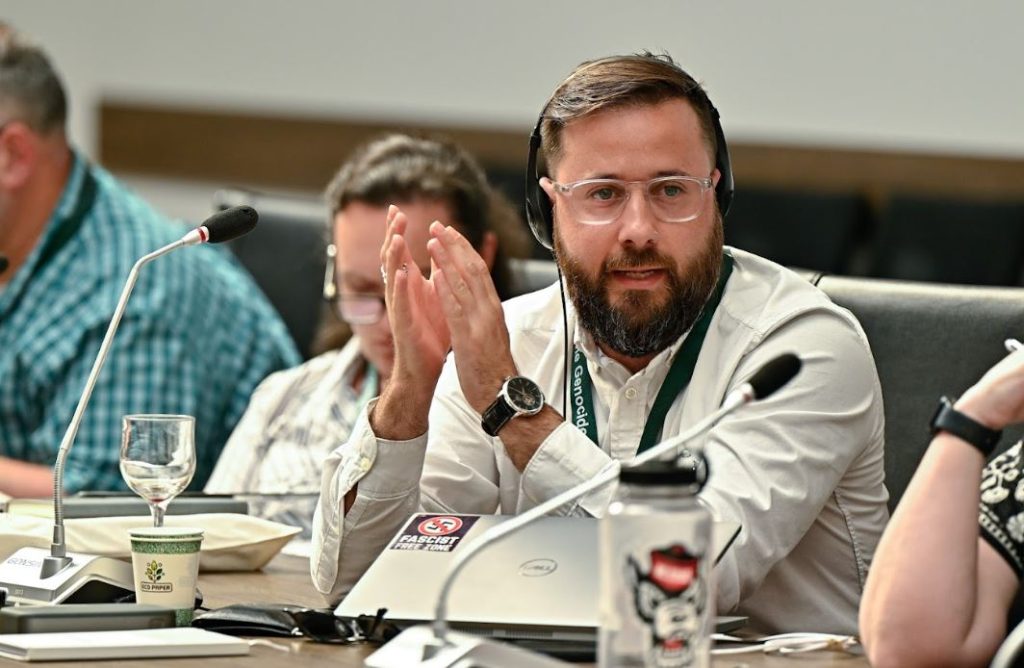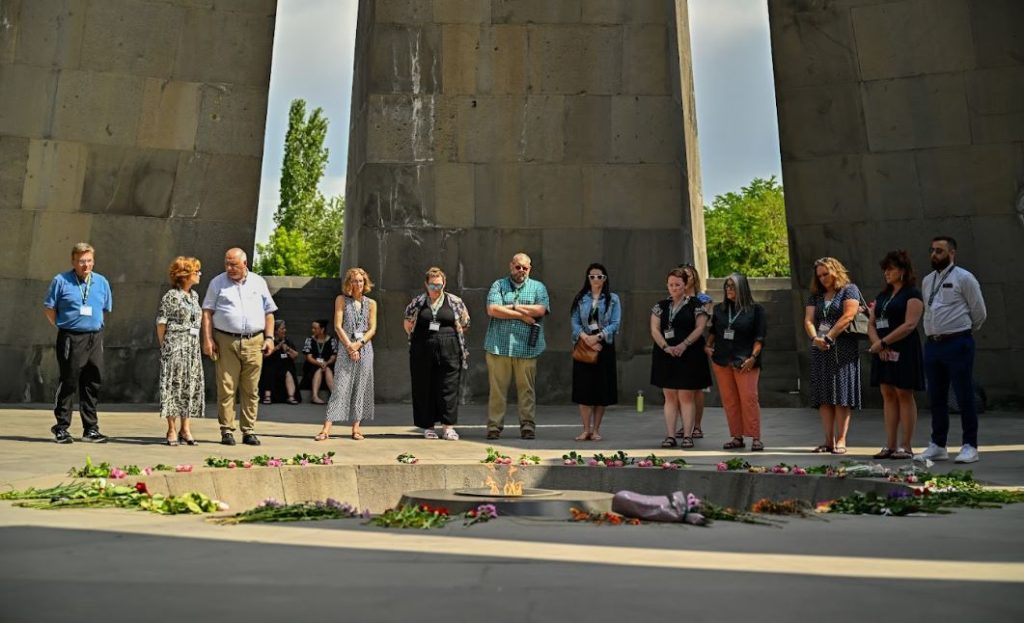By Paul Vartan Sookiasian
A U.S. non-profit initiative is bringing teachers from the United States to Armenia in order to learn about experiences around the Armenian Genocide that, for decades, have been told mainly by Armenians.
For three years now, the Genocide Education Project (GenEd) has given U.S. educators the opportunity to travel to Armenia every summer to study genocide and human rights on the ground among descendants of survivors.
The third trip of its kind took place earlier this month, with 15 teachers participating in a series of training sessions at the Armenian Genocide Museum-Institute in Yerevan, as well as in various activities throughout the country.
GenEd started developing instructional materials and providing access to teaching resources for educators on the issue of genocide and human rights, with specific focus on the Armenian case.
This work started 20 years ago. In the years since, a number of U.S. states have mandated teaching about genocides in high schools, and GenEd has become the leading source for curriculum materials on the Armenian experience. The opportunity to study in Armenia is a natural growth of that work, giving educators first-hand exposure to the subject and training them to lead similar workshops for others in their communities.
Kerri Flynn of St. Louis serves as GenEd’s education director; he was a fellow in the program’s first year. She calls the chance to come learn in Armenia incomparable, telling CivilNet it allows educators “to not only walk in the shoes of survivors as historical observers, but to make emotional connections with them as well.”

Participant Chris Dier, a history teacher in New Orleans and a finalist for the National Teacher of the Year award, says coming to Armenia has added to his understanding of the genocide: “It has helped me look at the history of Armenia in different lenses, not just as this narrative of victimization, but I also see narratives of people resisting, maintaining their culture and sense of identity.”
What makes the Armenian Genocide in particular a subject these teachers traveled around the world to understand better?
For Dier, “the Armenian Genocide is unique in that it set a precedent for future genocides that came after, like the Holocaust, and so I don’t think students can understand global atrocities, whether it’s in the Holocaust or in Gaza, without understanding what happened to Armenians.”
Flynn says teaching genocide requires greater care than other aspects of history and greater concern for students’ mental well-being. To that end, the fellows spent a day with faculty from the American University of Armenia’s Genocide and Human Rights program to learn how they approach this topic with their students.
Participant Sarah Donovan, assistant English professor at Oklahoma State University, found striking parallels between the aftermath of the Armenian Genocide and a historical atrocity closer to her own backyard, the Tulsa Race Massacre.
The massacre of residents of the city’s Black neighborhood by mobs of white residents in 1921 is considered one of the worst episodes of racial violence in U.S. history, but remains relatively unknown and is only coming to wider attention now.
”The Tulsa violence was originally known as a riot, but people have been advocating for it to be called a massacre. As I’m learning here, these terms matter and there’s a big difference,” Donovan says.
In both the cases of Tulsa and Armenia, she sees parallels in why they have not been commemorated, how people perceive what happened, who is actually doing the memorializing, and whose stories are being marginalized.
Donovan and her fellow teachers stressed the importance of learning from past atrocities to identify new ones that may be looming today. They paid special focus in this year’s workshops to Azerbaijan’s ethnic cleansing of Artsakh last September, which they say demonstrates the danger of history repeating itself.

Participants say the trip is a roller coaster of emotion, from the psychologically weighty subject matter to more light-hearted cultural immersion experiences and sightseeing.
After returning to the United States, each of the 15 fellows will also put to use what they’ve learned by leading similar workshops for 15 educators in their own communities, exponentially growing who is reached.
Participants will also conduct professional development projects based on their experiences. They will produce social media content, teach civics and advocacy around current issues surrounding Armenia and Artsakh, and conduct oral history collection trainings.
Flynn says “there’s power in learning from someone who has a personal connection to the place. It makes students so much more engaged, and they are going to be outraged and want to do something.”
For so many years, it was almost exclusively Armenians sharing their stories of genocide, having to struggle against overwhelming denialist forces.
As Flynn says: “Armenians have tried to shoulder this for so long. Americans do care, they just don’t know, so that’s why we spread that awareness of what’s happening here. Hand it to us. We’re ready to take it.”
The post U.S. educators learn first-hand about the Armenian Genocide through GenEd appeared first on CIVILNET.